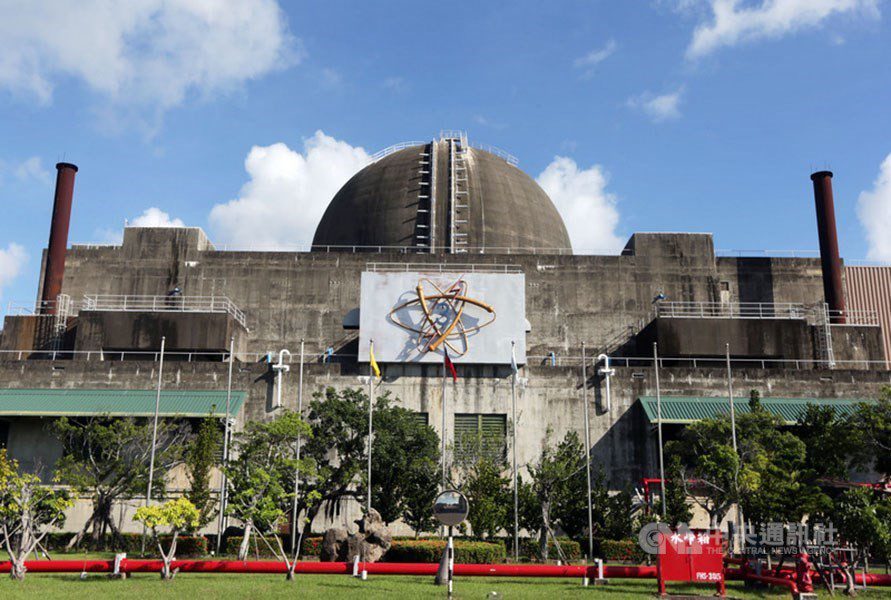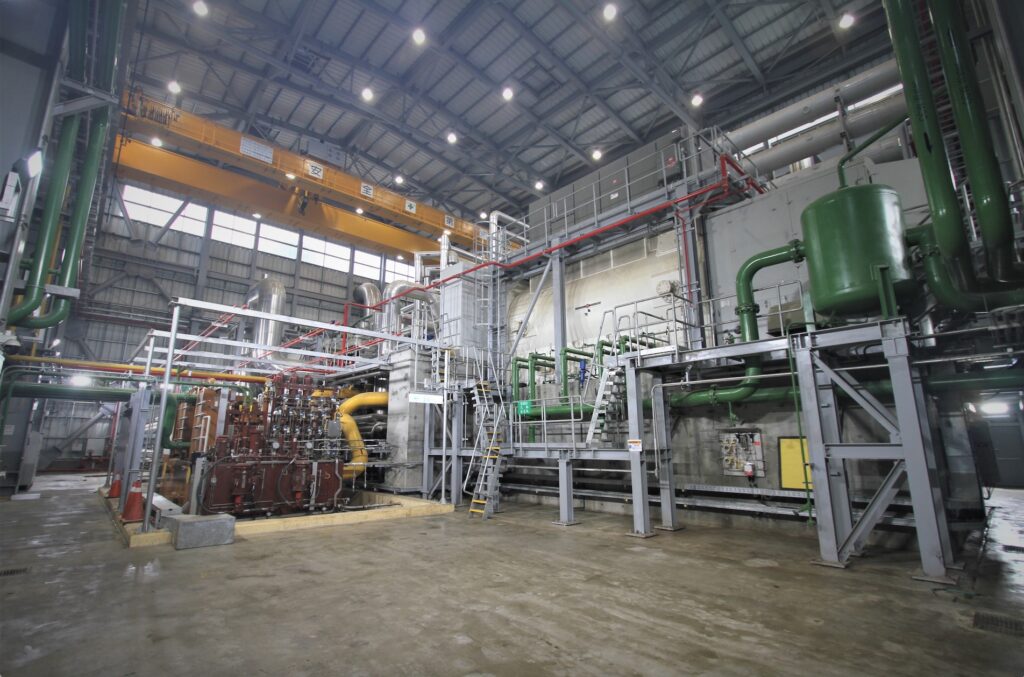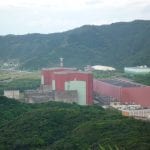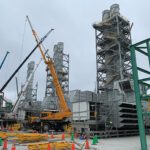A new combined heat and power gas-fired plant, designed to support increased power generation as part of Taiwan’s developing energy policy, has entered commercial operation. General Electric (GE) on Aug. 10 said the 535-MW Chia Hui facility, using GE’s advanced HA technology, is located in Minxiong Township in Chiayi County, the sixth-largest county in Taiwan.
The plant’s startup comes as Taiwan moves to reduce its use of coal-fired and nuclear power generation, while increasing gas-fired and renewable energy output.
The Chia Hui plant, in addition to providing electricity, also will produce steam for district heating for the Chiayi province. Officials on Tuesday cited the project as a “significant achievement in supporting Taiwan’s Renewable Energy Development Act (REDA) energy policy, which seeks to increase the gas-fired power ratio to 50% by year 2025.”

GE in a news release said the turnkey combined cycle plant project includes GE support for the “full plant lifecycle including power generation equipment, analytics and controls software, and service agreement.” The Chia Hui project during construction was recognized last year as a “Best-in-Class for Safety and Health Management” project by Taiwan’s Occupational Safety and Health Administration Agency (OSHA). The group said the plant is a model site for Southern Taiwan.
“We have global expertise managing large-scale power projects. For more than 80 years we’ve been designing gas turbines for use for power generation,” said Teik Quah Seong, project director for GE Gas Power. Seong told POWER, “We have built, maintained and monitored this plant, providing not only power generation equipment, but also analytics and controls software and [a] service agreement. We are honored to provide more affordable, reliable, flexible and sustainable power to help power plant operators, like Chai Hui Corporation, succeed today, and plan for a lower-carbon future.”
Replacing Nuclear and Coal Generation
Taiwan’s move to reduce the country’s use of coal-fired and nuclear power includes a target of shutting down the country’s remaining nuclear reactors by 2025. The latest closure was Unit 1 of the Kuosheng Nuclear Power Plant in Wanli District in New Taipei City, which shut down on July 1 after operating since December 1981.
Taiwan received about 13% of its electricity from nuclear power last year, while 80% came from coal and natural gas. The country’s parliament in January passed a resolution to decommission the 5.5-GW, 10-unit coal-fired Taichung power plant by 2035, despite concerns about a shortfall in electricity supply. Hydropower output in the country last year was at its lowest level in several years, owing to a drought considered the country’s worst in more than 50 years.
Want more information about Taiwan’s energy transition? Read how an energy storage system from Wärtsilä will support the country’s renewable energy goals.
The Third Nuclear Power Plant in Pingtung County in southern Taiwan in late July filed an application to shut down. Current Taiwan law means an application for closure must be filed at least three years prior to closure. The country’s two other operating nuclear plants, both located on Taiwan’s northern coast in New Taipei City, have operating licenses that end in July 2024 and May 2025, respectively. The plants are all operated by state utility Taiwan Power Corp., known as Taipower.

Taipower in late March shipped 120 unused fuel rods from the shuttered Fourth Nuclear Power Plant back to U.S. supplier Global Nuclear Fuel Americas LLC, according to local news reports. The U.S. group is responsible for storing and dismantling the rods. The Fourth NPP was closed in 2014. Taiwan lawmakers in January 2018 passed legislation that required the plant’s 1,744 unused fuel rods to be shipped back to Global Nuclear Fuel Americas by year-end 2020, but the COVID-19 pandemic delayed a final shipment. Discussions about restarting that plant—a public referendum on the matter is scheduled for Aug. 28—have been held over the past few years, even as the fuel rods were being shipped.

Increase in Renewables
The International Trade Administration, part of the U.S. Dept. of Commerce, has said Taiwan plans to receive 20% of its power from renewable energy by 2025, up from just 5% last year. The group said Taiwan already has allocated to receive 5.7 GW of offshore wind power over the next five years, with another 10 GW added between 2026 and 2035, citing data from the country’s Ministry of Economic Affairs. The group said Taiwan plans to install 20 GW of solar energy capacity by 2025, though just 5.8 GW was installed through the first quarter of this year.
The Chia Hui plant is seen as a way to help Taiwan bolster its electricity supply as the country transitions its power generation to renewable energy.
“Taiwan’s Renewable Energy Development Act was enacted to promote the utilization of renewable energy, increase energy diversification, improve environment quality, energize the industry and drive the national sustainable development,” said Kent Chen, general manager of Chia Hui Power Corp. “The growth of gas power generation plays a critical role in facilitating Taiwan’s transition to a lower carbon future and supporting the reliable, affordable growth of sustainable energy.
“Chia Hui plant, powered by GE’s advanced HA technology, will help support our commitment to Taiwan’s mission to increase natural gas to 50% of the energy mix, while increasing Taiwan’s power reserve to proactively support our growing population,” Chen said.
Equipment Includes GE 7HA.02 Turbine
The Chia Hui facility features a single generating block equipped with a GE 7HA.02 gas turbine powering an H65 generator, a STF-A650 steam turbine powering an H33 generator, and a heat recovery steam generator. GE said the company manufactured, delivered, and installed the equipment, and will provide maintenance services for the next decade.

GE said its Mark VIe Distributed Control System (DCS) software will monitor and enhance the plant’s performance. The DCS is designed to improve asset visibility, reliability, and availability, while reducing operating and maintenance costs. The Mark VIe system “is utilized for system-wide programming, configuration, trending, and analyzing diagnostics. It provides a single source of quality, time-coherent data at the controller and plant level to diagnose and adjust how a plant is operating in real time,” according to GE.
The Chia Hui plant also will use GE’s Digital Energy Predix Asset Performance Management software, designed to improve predictive maintenance capabilities and the operational life of the power station. Data collected from sensors at the Taiwan facility will be monitored and analyzed at GE’s Monitoring & Diagnostics Center in Atlanta, Georgia.
FieldCore, GE’s field services company, collaborated on the project, helping promote quality and safety during construction. The Taiwan OSHA award for safety and health management marked the first time a non-Taiwan company received such recognition.
“We are proud for being recognized as a model for safety for our high-quality execution despite challenges presented by the COVID-19 pandemic,” said Ramesh Singaram, president and CEO of GE Gas Power. “This award showcases the importance of GE initiatives such as: ‘Stop Work Authority,’ rigorous quarterly audits and a permit-to-work process, daily site work coordination, inspections and reward programs to ensure safety remains top of mind for our team and all who partner with us on our projects.
“GE’s H-class power plants deliver flexible, efficient and reliable power to millions of people around the world and we are delighted to deliver our advanced technology, digital solutions, and services to Chia Hui Power Corporation to provide more efficient electricity to the Chiayi province and support the Taiwanese government’s goals,” Singaram said.
“We selected Chia Hui Power Plant as a model site for Southern Taiwan for the demonstrated excellence in training management, the permit to work management system and safe lifting operations, which we recommend as a best practice in construction,” said Ming-Chun Hsu, Southern Taiwan OSHA Director in an awards ceremony last year. “We are pleased to award the project to private sector projects including the Chia Hui power plant.”
Startup of the Chia Hui plant comes after GE earlier this year was selected to supply equipment for the 6,500-MW Hsinta and Taichung combined cycle power plants in Taiwan. New GE HA units at those facilities will be brought into service gradually as they replace retiring coal-fired boilers.
GE also has launched an open “Innovation Challenge” in Taiwan, a call for ideas to address issues with power supply and demand in the country. The challenge is being operated in collaboration with Taoyuan City Government and Taipower, and is GE’s first such initiative of its kind in Asia. The project will award more than NT$1 million ($36,000) to winning ideas, which GE said will focus on opportunities to increase Taiwan’s electricity supply, decarbonize the power sector, or reduce energy demand and consumption.
GE has more than 30 gas-fired turbines installed in Taiwan, representing about 6 GW of generation capacity.
—Darrell Proctor is a senior associate editor for POWER (@POWERmagazine).










